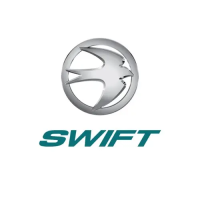FITTED EQUIPMENT
132
Types of glycol
Various types of antifreeze (as used in car
radiators) are available from service stations,
car accessory shops and on line retailers and
these types of antifreeze can be used to top
up or replace the heating system fluid in the
Alde heating system.
Frost and corrosion damage are not covered
under warranty, so it is important that the
type purchased contains corrosion inhibitors
suitable for use with aluminium systems.
Always check the label, ask the retailer for
advice, or check with your supplying dealer
if unsure. Please note the corrosion inhibitor
will have a limited life, and after it expires, the
system will have no corrosion protection.
The fluid will usually be named as Ethylene
glycol, but may also be described as
monoethylene glycol, MEG, ethanediol, or
G12++. There is no industry standard for
the colour of the antifreeze, but as a general
guideline it indicates the type of corrosion
inhibitor:
Blue, Green = Silicate inhibitor, usually offering
2-year corrosion protection
Red, Orange = OAT inhibitor, usually offering
5-year corrosion protection
Purple, Magenta = G12++ Silicated OAT
inhibitor, usually offering 5-year corrosion
protection
It is important that antifreeze containing Silicate
inhibitor (Blue or Green) is not mixed with
antifreeze containing OAT inhibitor (Red or
Orange). To guarantee compatibility, there are
two options:
Match the colour, taking care to also check the
label on the antifreeze bottle, i.e. if the system
is filled with blue silicate-containing antifreeze,
top up with blue silicate-containing antifreeze.
Use G12++ antifreeze which is compatible with
any of the other types of inhibitor described.
Header tank
- MAX
- MIN
R
S
Note: All Alde systems are installed and
bled during the manufacturing stage to the
requirements of Alde UK. However, further
bleeding may be required after the first few
operations of the system.
Bleeding the system
Depending on how the pipes have been fitted,
air pockets may form when the system is filled
with glycol fluid.
A sign that there is air trapped in the system
is that the heat released into the pipes only
extends a metre or so from the boiler even
though the circulation pump is operating.
In newly-filled systems, small air bubbles
can form in the expansion tank, creating a
murmuring sound. If the circulation pump is
stopped for a few seconds, the bubbles will
disappear.
Bleeding
The boiler is fitted with an automatic bleeder,
valve to bleed air out of the boiler. Start the
LPG boiler. The circulation pump should be
switched off.
Open the bleeder screws in the system (please
refer to the motorhome technical book for their
locations). Leave the bleeder screws open until
they start discharging fluid, and then close
them. Start the circulation pump and let it run
for a while. Check that the pipes and radiators
around the vehicle are heating up.
ALDE HEATING

